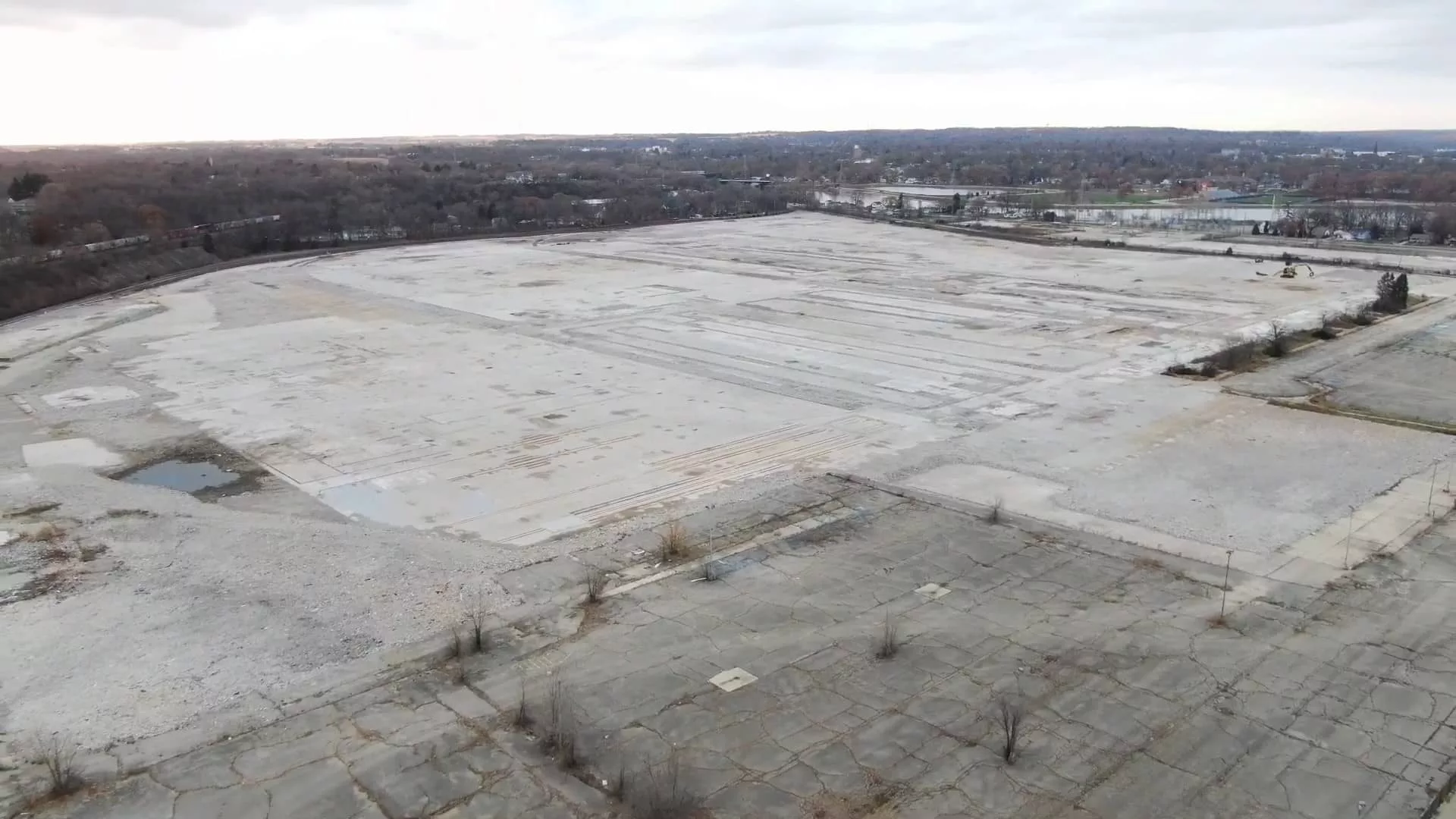
| By Neil Johnson, reporter/anchor, Big Radio |
The council OK’d a condemnation relocation order Monday night — a move that starts a process to force owner Commercial Development Company after years of inactivity to sell the city the 250-ACRE, blighted property.
Commercial Development has cleared off the former GM assembly plant, but has left behind acres of concrete, asphalt, and decades of industrial soil contamination — flouting city demolition 0rdinances and state laws on property cleanup.
It’ll be months before the council would be asked to approve city negotiations to set a buying price for the GM site.
But Chris Smith, a lawyer the city’s hired in the matter, says appraisal is the first step in the city taking over the massive site that’s been defunct since GM shut down the nearly 100-year-old auto plant there in 2009.
Smith told the council Monday night that the city under a relocation order can now move forward on a process to allow Commercial Development under a legal time frame to compare appraisals with the city and come to a “reasonable” negotiated price to sell the city the 115-acre GM plant site and the 115-acre JATCO haul-away yard to the south, along with four other smaller, adjacent plant properties.
Commercial Development’s owned the site since 2017 after purchasing it from General Motors.
Like City Manager Kevin Lahner said publicly last week, Smith told the council Monday night that unless the city eventually takes ownership of the property, it’ll likely to continue to sit idle, blighted and contaminated as it has under Commercial Development’s hand.
Commercial Development demolished, scrapped out and removed millions of square feet of former GM plant buildings from the property, but the company has remained inactive on the site since 2020, although it has unsuccessfully tried to sell the property at auction twice in the last three years.
The state Department of Natural Resources has a “closure letter” on the main GM plant site, the northern 115 acres, that requires a “cap” remain in place to cover petrochemical soil contamination the DNR has identified throughout the site.
But city rules require removal of material the DNR considers a “cap” over the soil. That material is dozens of acres of concrete and asphalt that Commercial Development has left in the ground–some of it beneath rubble and other refuse Commercial Development’s contractors had plowed into piles but abandoned on the site.
After years of neglect, the site is now becoming overgrown with a tangle of weeds, bushes and saplings that have sprung out of cracks in the leagues of abandoned tarmac and concrete.
Janesville resident Dan DeFour told the council Monday night in public comment that he thinks the city’s moving too fast acquiring property that it knows is contaminated–and that’s after he says it let General Motors walk away from the contamination by selling off the property years ago.
DeFour said at minimum, the city owes the public a ballpark estimate of environmental cleanup costs before it forges ahead trying to force sale of the property. He thinks any moves the city makes toward buying the massive, south-side property should be approved through a “transparent,” public-hearing process.
DeFour told the council if it settles on a negotiated purchase price for the site or takes Commercial Development to court to get a judgement on a sale price and take title of the huge property, that will “codify” what the he calls the “massive mistake” the city made in earlier days when it didn’t hold GM responsible for years of industrial contamination.
He said now, city leaders propose to write a “blank check” for unknown cleanup costs at the site, a move he said would put the cost on the shoulders of city taxpayers.
The city last year designated the GM site as a tax-increment-financing district that’s at least 70-percent blighted, a designation that would make the property eligible for 27 years for development loans that would be repaid by new tax value improvements would bring.
First, though, somebody has to clean up the property to the point it can be redeveloped. Commercial Development has not apparently given the city any clear inkling recently that it plans to do so.
Smith, the city’s hired attorney, later addressed DeFour’s concerns, saying one of the main purposes for a legal appraisal process is to give the city full clarity on the scope of environmental cleanup costs. He said that process is all that the council formally approved Monday under its relocation order, and he says it’s a necessary step to help the city eventually negotiate a “fair” price on the land.
The city would be eligible for state and federal grants for cleanup.
Smith said city staff won’t come back to the council with recommendations on how to acquire each of the six separate GM parcels until it’s reached critical mass in negotiations with Commercial Development on each of the parcels.
He indicated that could take months, and he said it’s possible the city could hash out a fair price on some of the parcels but get hung up on negotiations on others. Smith said that might mean the city comes back to the council with varying recommendations on how to proceed on different parts of the land, including seeking a judge’s decision on a price to take title of some or all of the land.
The council likely won’t face that set of decisions for several months.
